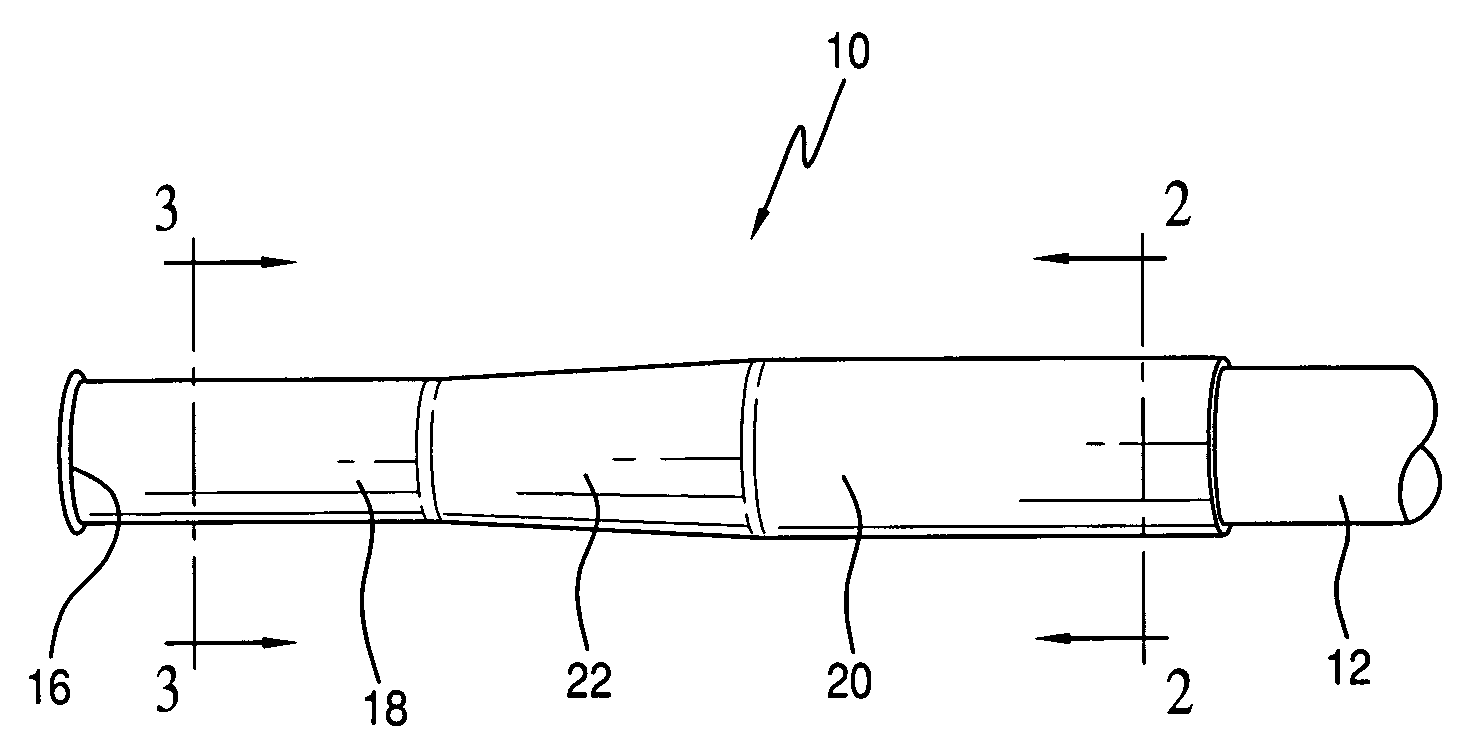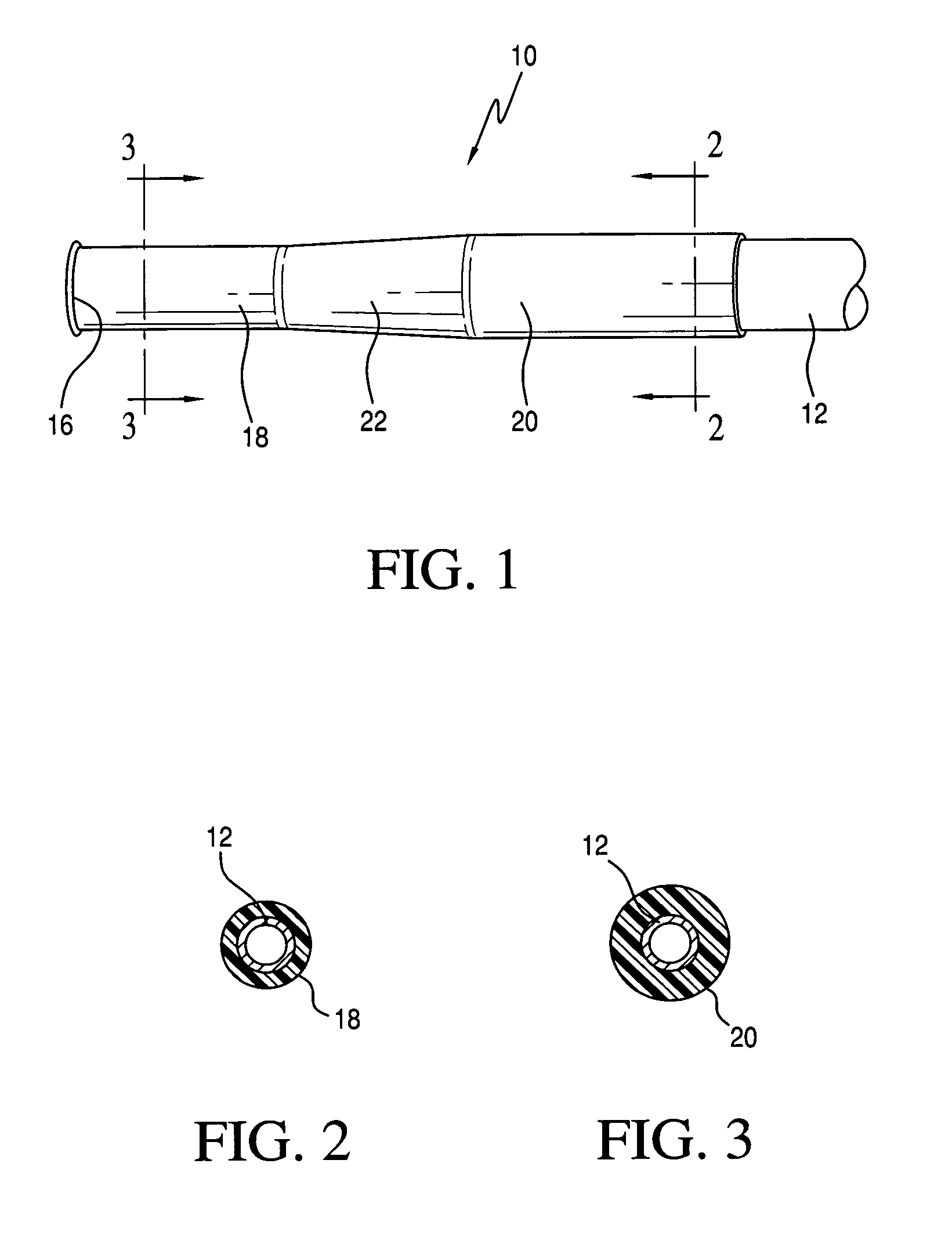Golf club grip
a golf club and grip technology, applied in the field of golf club grips, can solve the problems of poor golf shots, dominance of the golf swing control of the lower hand, increase the difficulty of repeating the golf swing, and increase the difficulty of golfing the golf club holding the golf club, so as to improve the feel and control of the golf club
- Summary
- Abstract
- Description
- Claims
- Application Information
AI Technical Summary
Benefits of technology
Problems solved by technology
Method used
Image
Examples
Embodiment Construction
[0029]Referring to the drawings, a full swing golf club grip 10 in accordance with the present invention is shown positioned on a club shaft 12 with a club head 30 on the opposite end thereof. The grip 10 preferably is a molded, single, unitary unit and includes an opening 14 at the lower end of the grip 10 for insertion of a shaft 12 during assembly. A cap 16 is provided on the upper end of the grip 10 to cover the upper edges of the shaft 12. The grip 10 is formed of an upper section 18 having a first diameter, a tapered transitional area 22 having a gradually increasing diameter in a direction away from the upper section 18 and a lower section 20 formed with a second diameter greater than the diameter of the upper section 18. The tapered transitional section 22 connects the upper section 18 and lower section 20 whereby the entire grip 10 is formed of a single unitary piece of molded material. Both the upper section 18 and the lower section 20 have a constant, non-tapered, outer d...
PUM
 Login to View More
Login to View More Abstract
Description
Claims
Application Information
 Login to View More
Login to View More - R&D
- Intellectual Property
- Life Sciences
- Materials
- Tech Scout
- Unparalleled Data Quality
- Higher Quality Content
- 60% Fewer Hallucinations
Browse by: Latest US Patents, China's latest patents, Technical Efficacy Thesaurus, Application Domain, Technology Topic, Popular Technical Reports.
© 2025 PatSnap. All rights reserved.Legal|Privacy policy|Modern Slavery Act Transparency Statement|Sitemap|About US| Contact US: help@patsnap.com



